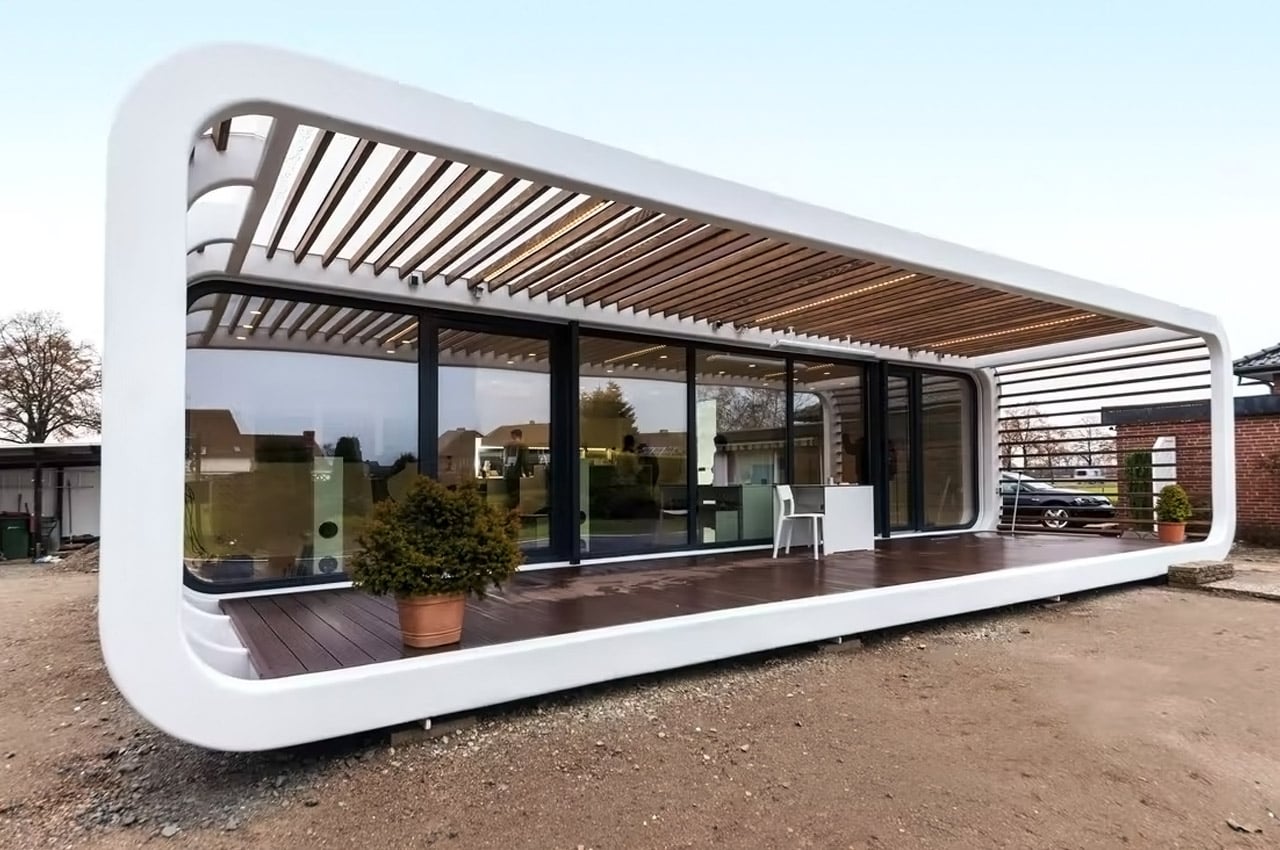
Living in a sustainable, conscious, and smart manner has become not only a necessity but our moral obligation and duty toward the planet. Our homes should seamlessly integrate with, and nourish the planet, not drain her resources and reduce her lifespan. Being at one with Planet Earth, while taking rigorous care of her has never been more of a priority. In an effort to encourage an eco-friendly way of life, sustainable architecture has been gaining immense popularity among architects. They have been designing sustainable homes. These homes aim to harmoniously merge with nature, co-existing with it in peace, and allowing us to live in equilibrium with the environment. They reduce their carbon footprint and encourage a sustainable and clean lifestyle. And, not to mention they’re aesthetically and visually pleasing as well! From a tiny sustainable home that only measures 3×3 meters to a hostel in Shanghai built using recycled red bricks, natural clay, and reed bundles – these amazing designs will convert you into a sustainable architecture advocate!
1. The Coodo
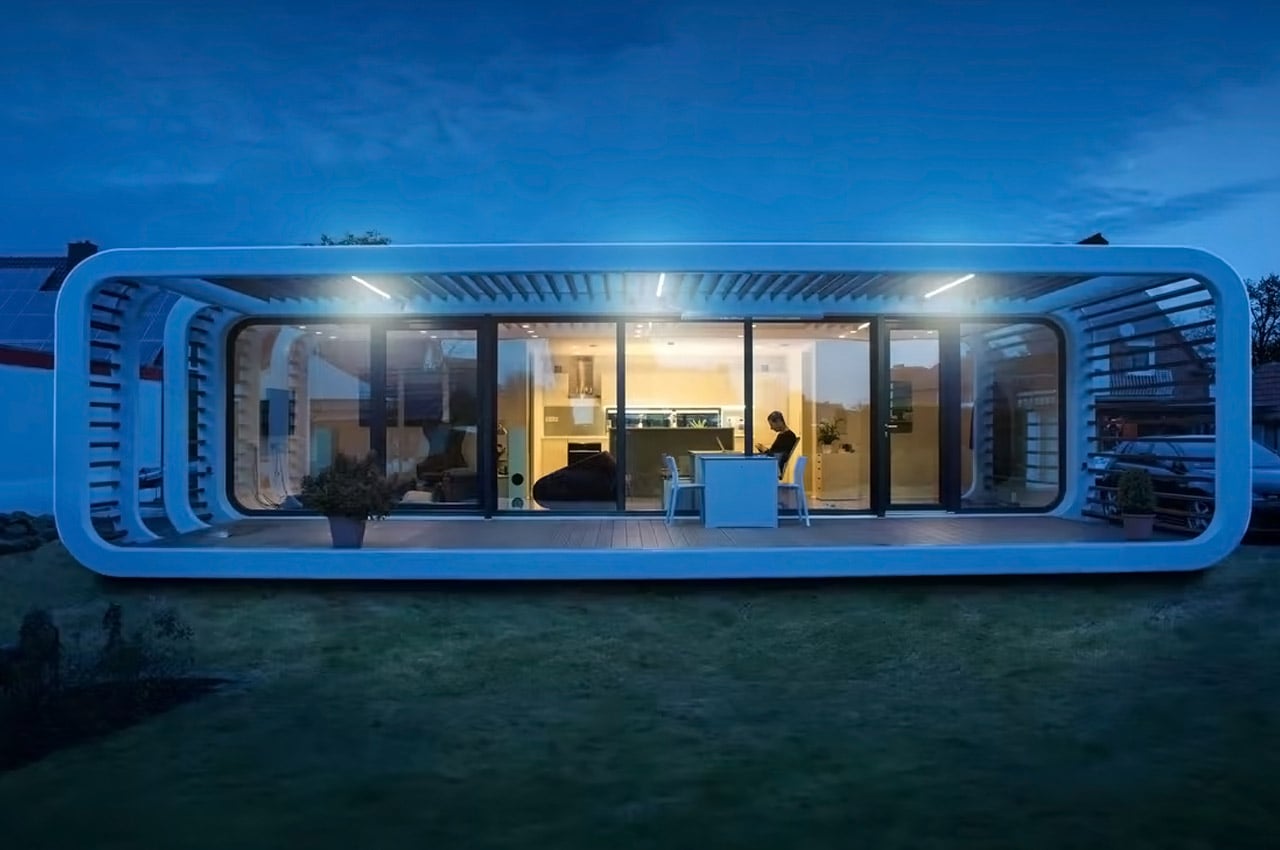
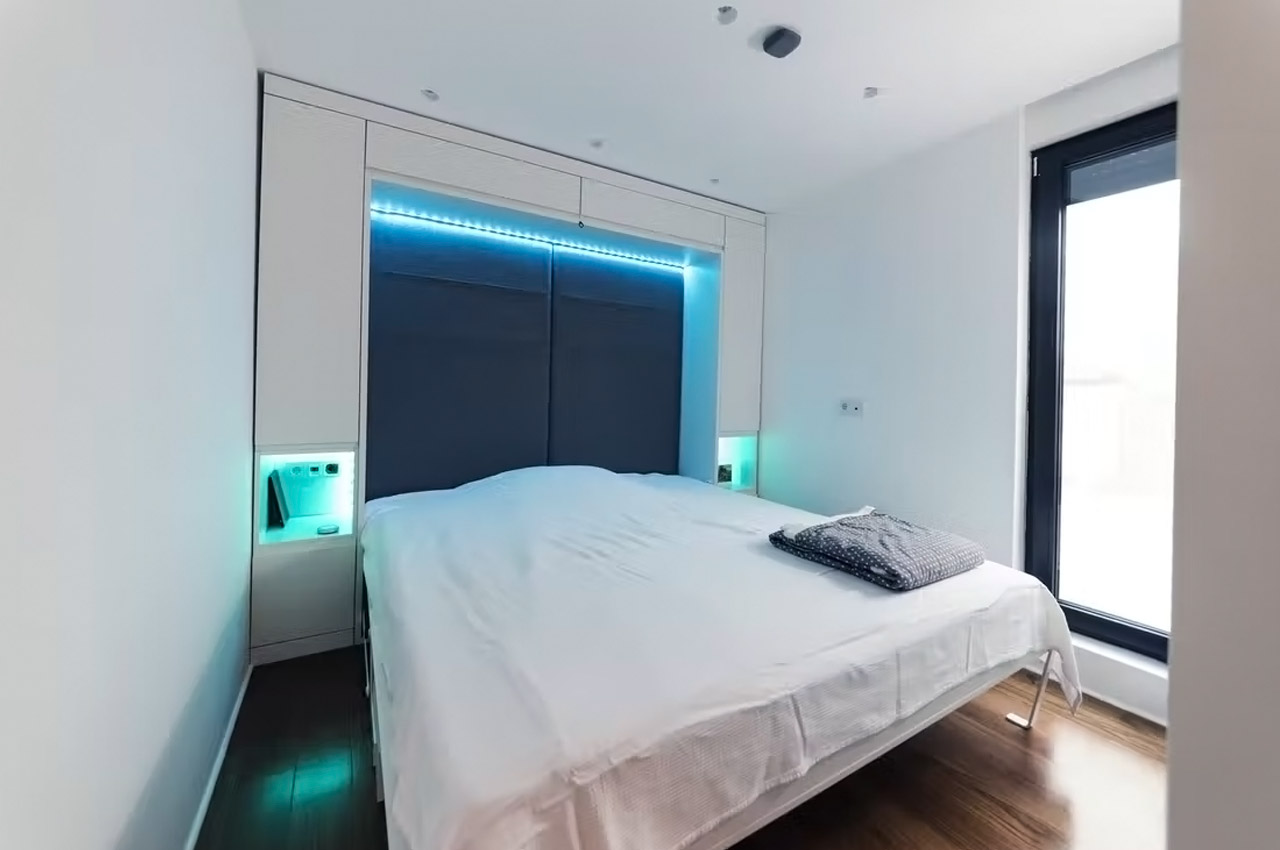
A couple of years ago, German entrepreneur Mark Dare Schmiedel got pretty fed up with the chaos of Berlin and decided to move to the countryside, building his own quaint loft along the banks of the River Spree. The peace, calm, and zen that followed, got him wondering whether it would be possible to create a similar, but a mobile form of home, that could provide the same sanctuary to others. In his quest for such a retreat, he came across a mobile home concept designed by a group of Slovenian architects called ‘Coodo’. Schmiedel went on to procure the design rights of the concept, through his company LTG (Lofts to Go) and kickstarted the production of the units. The modular homes aim to bring you closer to nature, to a space away from the crowds, where you can truly enjoy the beauty of a moment.
Why is it noteworthy?
It features a curved, minimal steel frame with rounded edges and stunning floor-to-ceiling glass walls. The beautiful glass walls allow a generous stream of sunlight to enter the home. Whether on rooftops in the city, on beaches, on mountains, or alongside a river, the Coodo can be easily installed almost anywhere.
What we like
- Integrated utilization of smart home technology.
- Adherence to Passive House standards.
What we dislike
- With its focus on natural settings, we wish there was a way to enclose the open patio space to close up when away from the home
2. The Octothorpe House
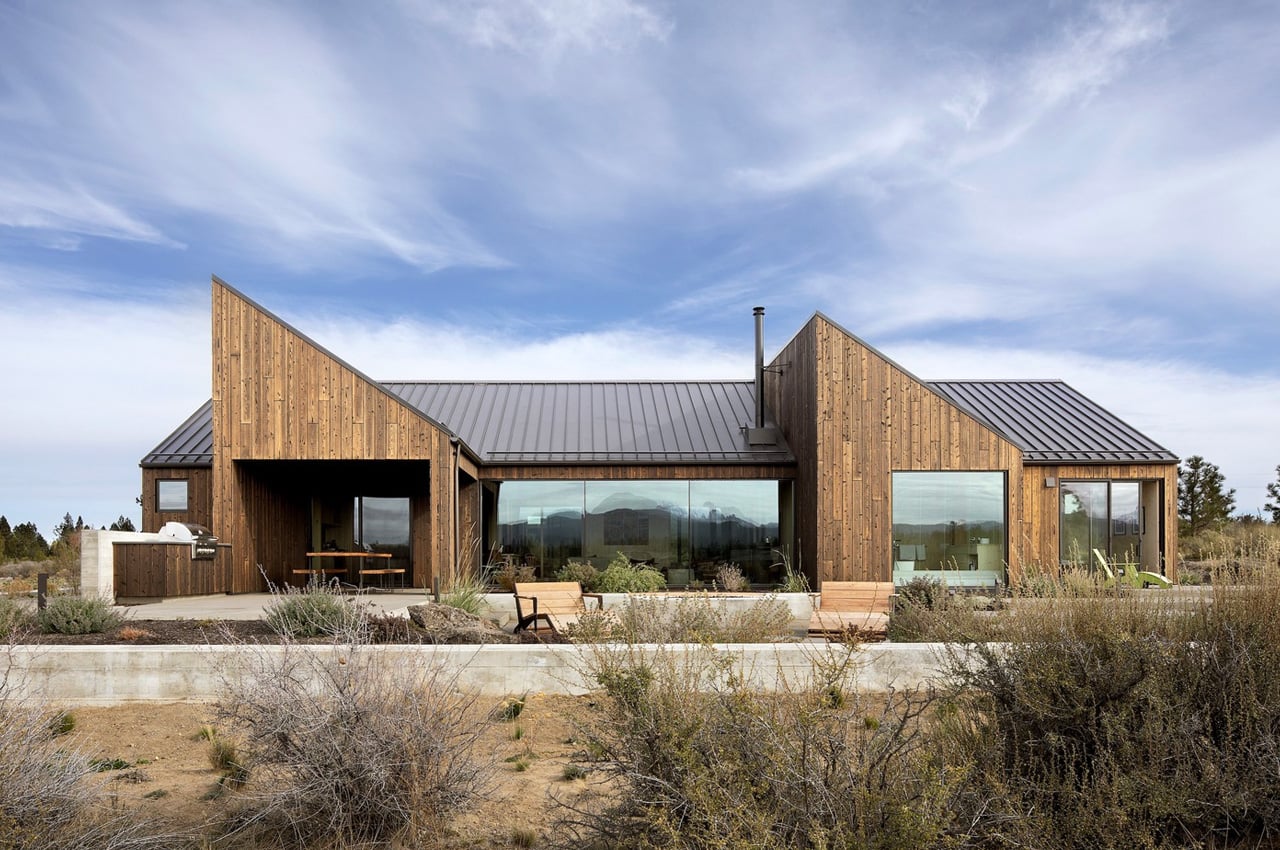
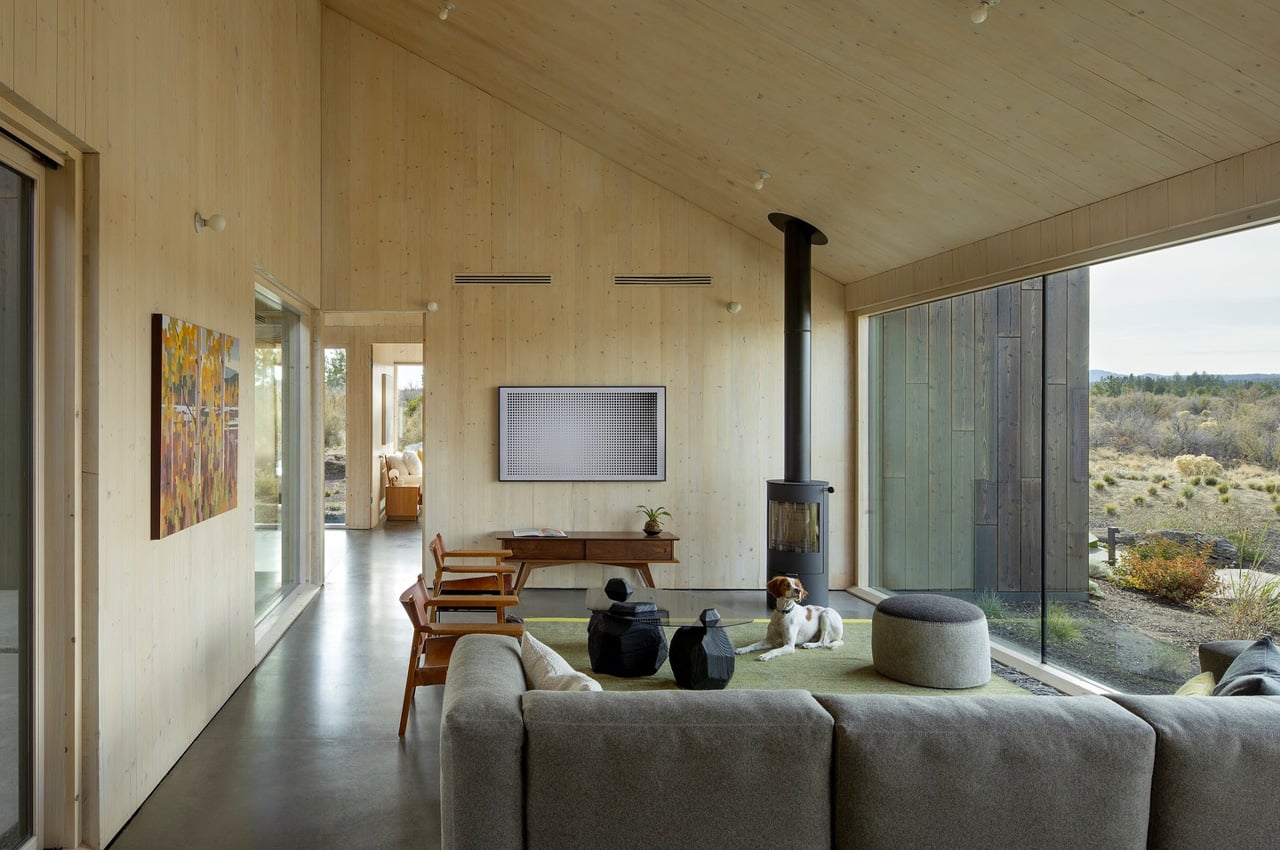
Called the Octothorpe House, this impressive home in the Oregon high desert area near Bend was commissioned by a couple Mike and Katherine to Mork-Ulnes Architects. They wanted a home that would harmoniously merge with the desert landscape, and be environmentally friendly as well.
Why is it noteworthy?
To meet the client’s desire for a sustainable home, Mork-Ulnes Architects decided to use ‘cross-laminated timber’ in the construction of the home. What makes this timber sustainable is the fact that it has a strength-to-weight ratio that’s similar to concrete, but it is five times lighter as compared to it. CLT is pre-cut off site, which also reduces construction waste immensely.
What we like
- The architects utilized CLT to build the interiors and the exterior of the Octothorpe House, this prevented them from releasing almost 15 metric tons of greenhouse gases into the air
What we dislike
- The central courtyard has an open design, which we hope has a retractable roof
3. 3×3 Retreat
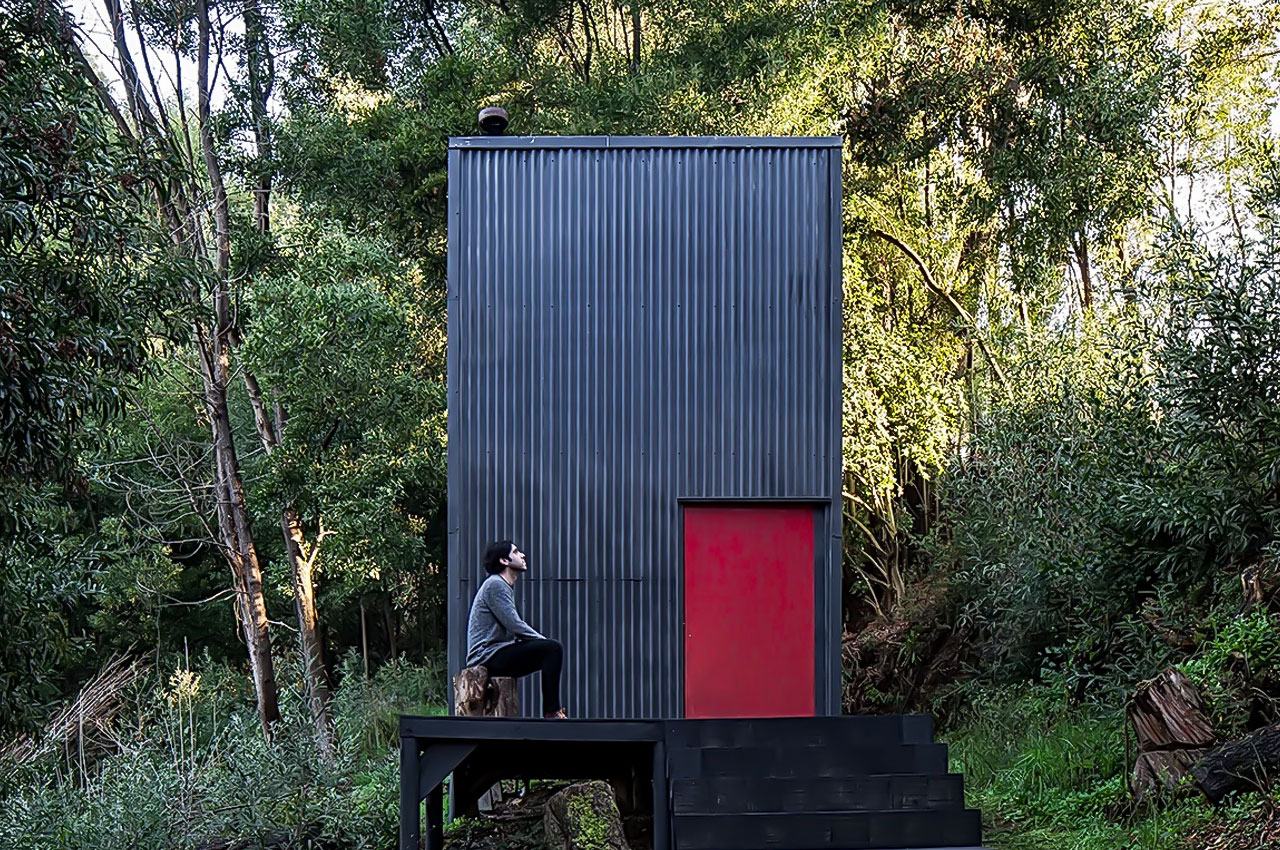
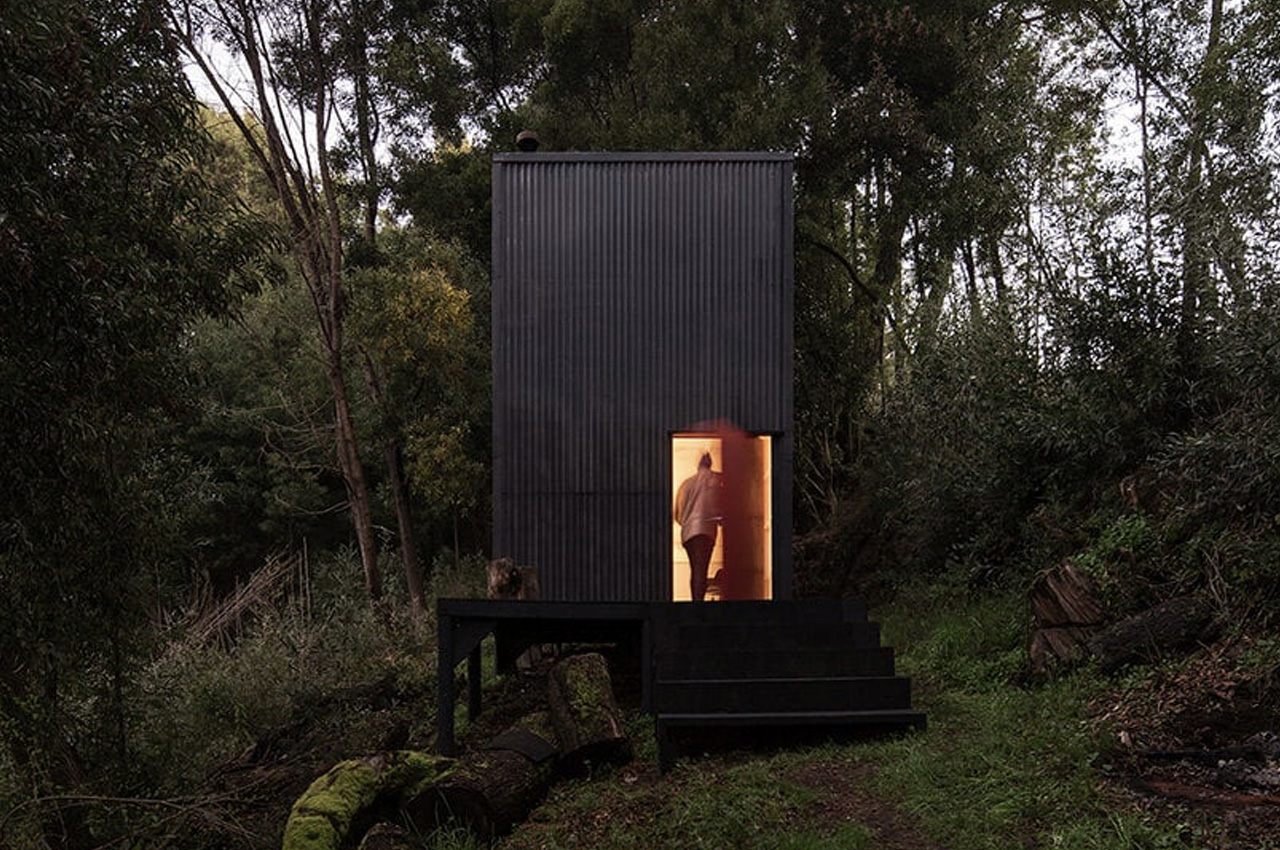
Tucked away in the rainforest landscape near Southern Chile’s La Unión city is a tiny cabin called the 3×3 retreat. Designed by Estudio Diagonal Architects, the tiny home was designed to create a sense of cohesion between the ‘radical geometry’ of the structure, and the natural and organic essence of the site.
Why is it noteworthy?
The cabin aims to function as a comfortable, cozy, and functional dwelling in the raw rainforest, without disturbing or causing harm to the forest in the least. It is placed on a slope, that subtly overlooks the Radimadi River. This was a genius move since it allows the cabin to provide its residents with stunning views of nature.
What we like
- The entire cabin was constructed by using common and economical building materials, such as standard pre-dimensional pine wood
- Local construction techniques were utilized
What we dislike
- The small footprint may not be suitable for everyone. Some people may find it too tiny
4. SOM LAND
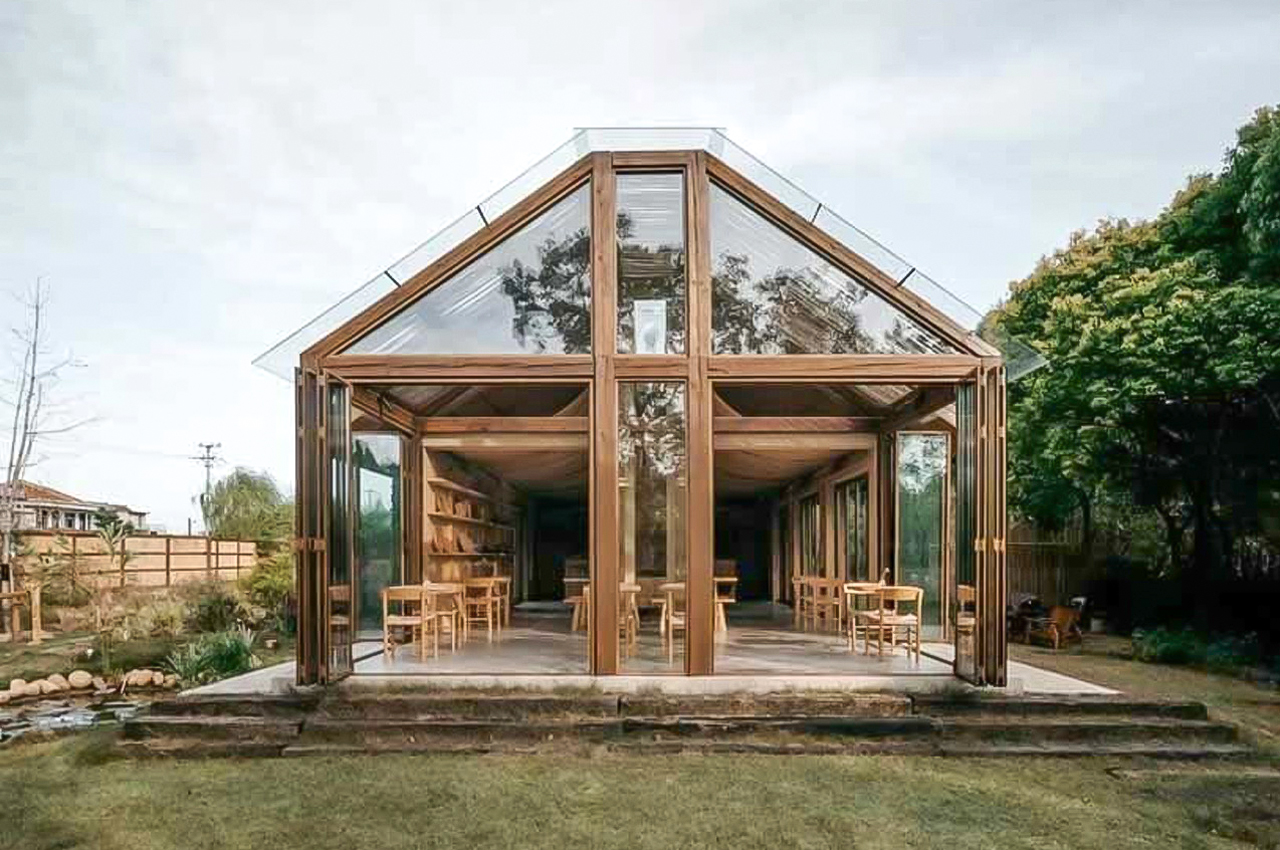
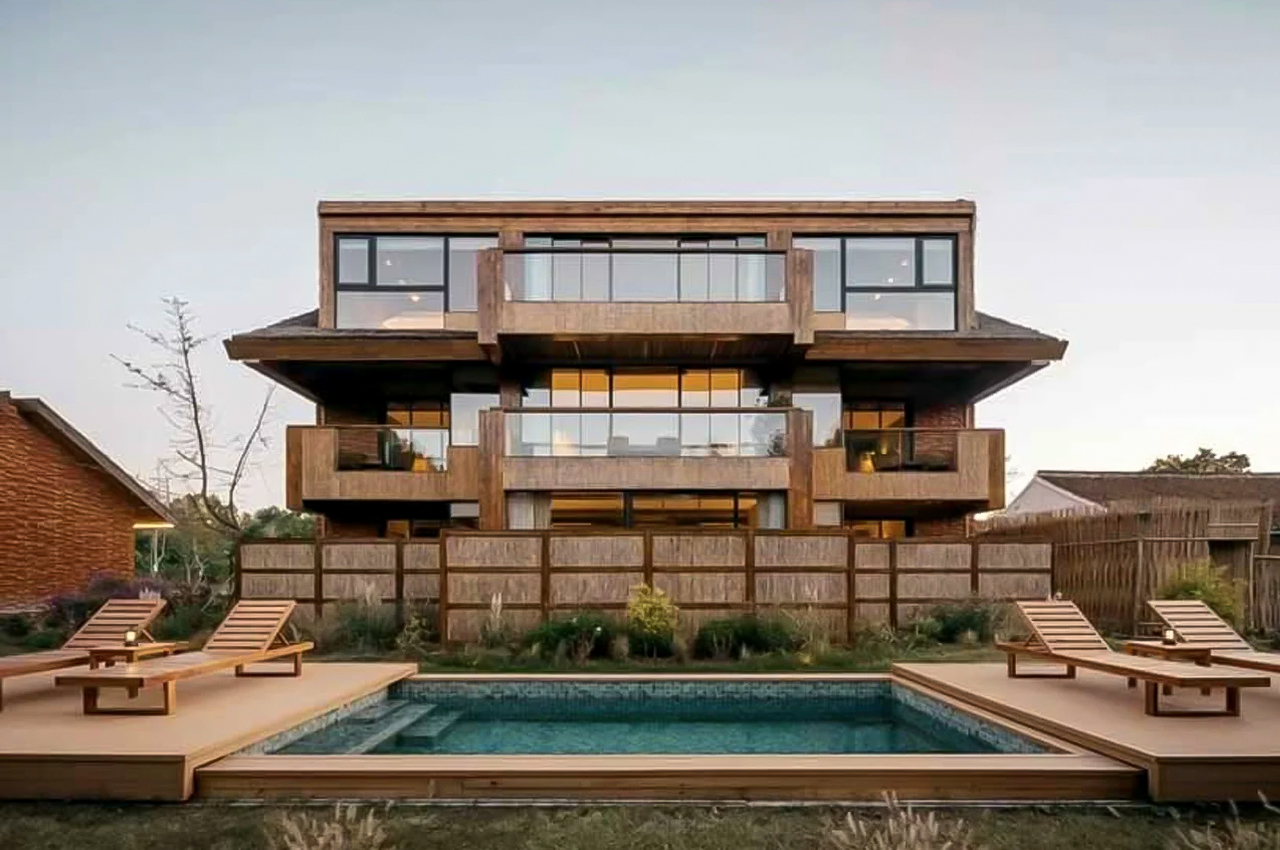
Chinese design studio RooMoo transformed a pre-existing building into a hostel on the Chongming Island of Shanghai. Called the ‘SOM LAND’, the hostel is named after the traditional Chinese color of warm green, which makes a reference to the gaps found in between tree shadows and is a tribute to a slow-paced life.
Why is it noteworthy?
The construction of the hostel involved the utilization of local customs and handicrafts and caused minimum damage to the surrounding land. In fact, it incorporated the surrounding environment into the architectural scheme.
What we like
- To incorporate sustainability into the structure, it was built using recycled old wood boards, wasted red bricks, tree branches, reed bundles found on the site, and bamboo and other locally sourced and discarded materials
What we dislike
- Despite being renovated, the aesthetics of the hostel are old-school and can be considered out of style
5. LILELO
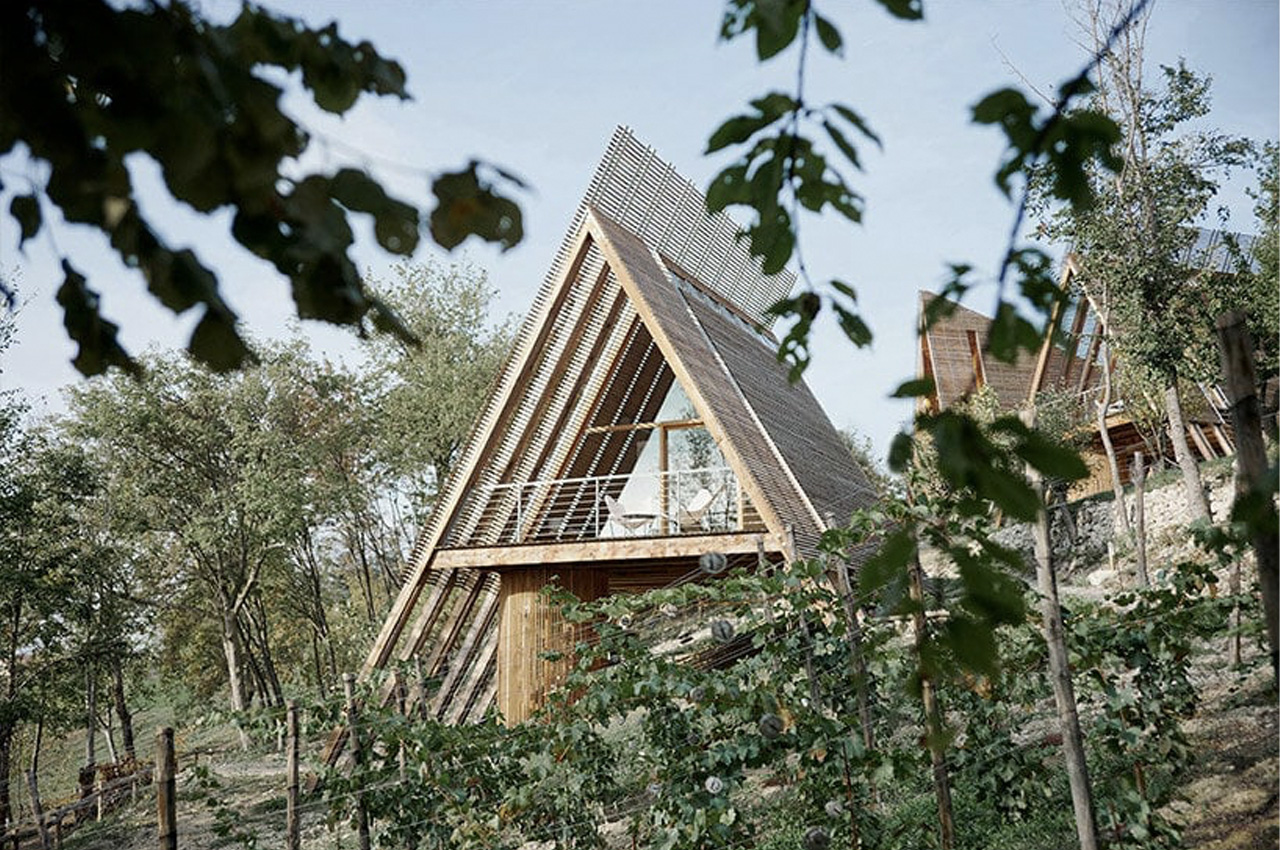
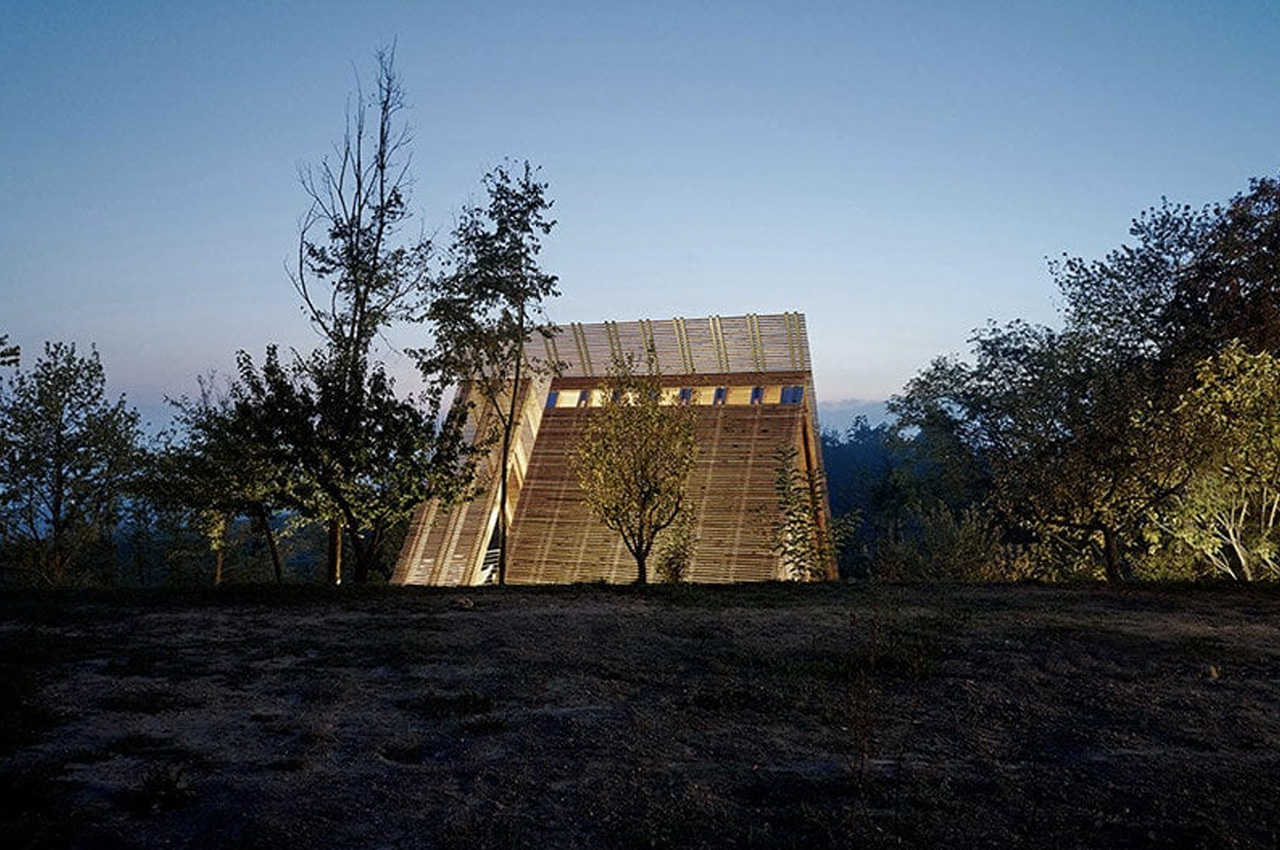
Nestled away in the center of Piedmont, Italy, surrounded by vineyards and woodlands is LILELO (Little Leisure Lodges). It includes a group of four adorable wooden cabins.
Why is it noteworthy?
The cabins are inspired by traditional haystacks, creating a triangular silhouette, which is supported by a trunk-like base. The cabins have been elevated off the ground, ensuring they don’t touch it, in an attempt to adopt a sustainable approach. This approach lays an emphasis on energy efficiency and eco-compatibility materiality.
What we like
- The elevated cabins ensure that there is minimal impact on the ground, while also beautifully complementing the sloping topography
- The eco-cabins artfully merge with their surrounding, creating the impression that is it at one with nature around it
What we dislike
- There’s only one door in the entire cabin, which can lead to a lack of privacy
6. Koto Design x Adobu’s Prefab Home
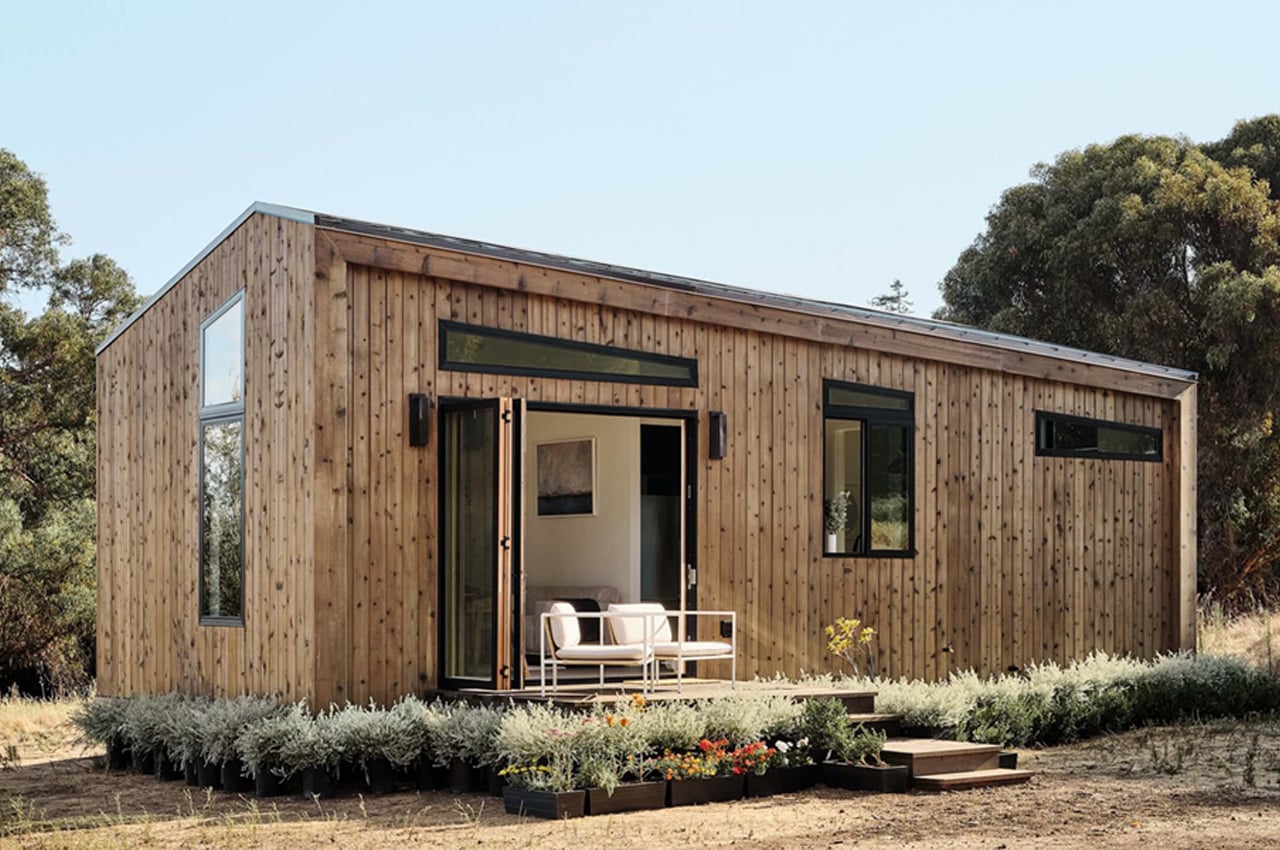
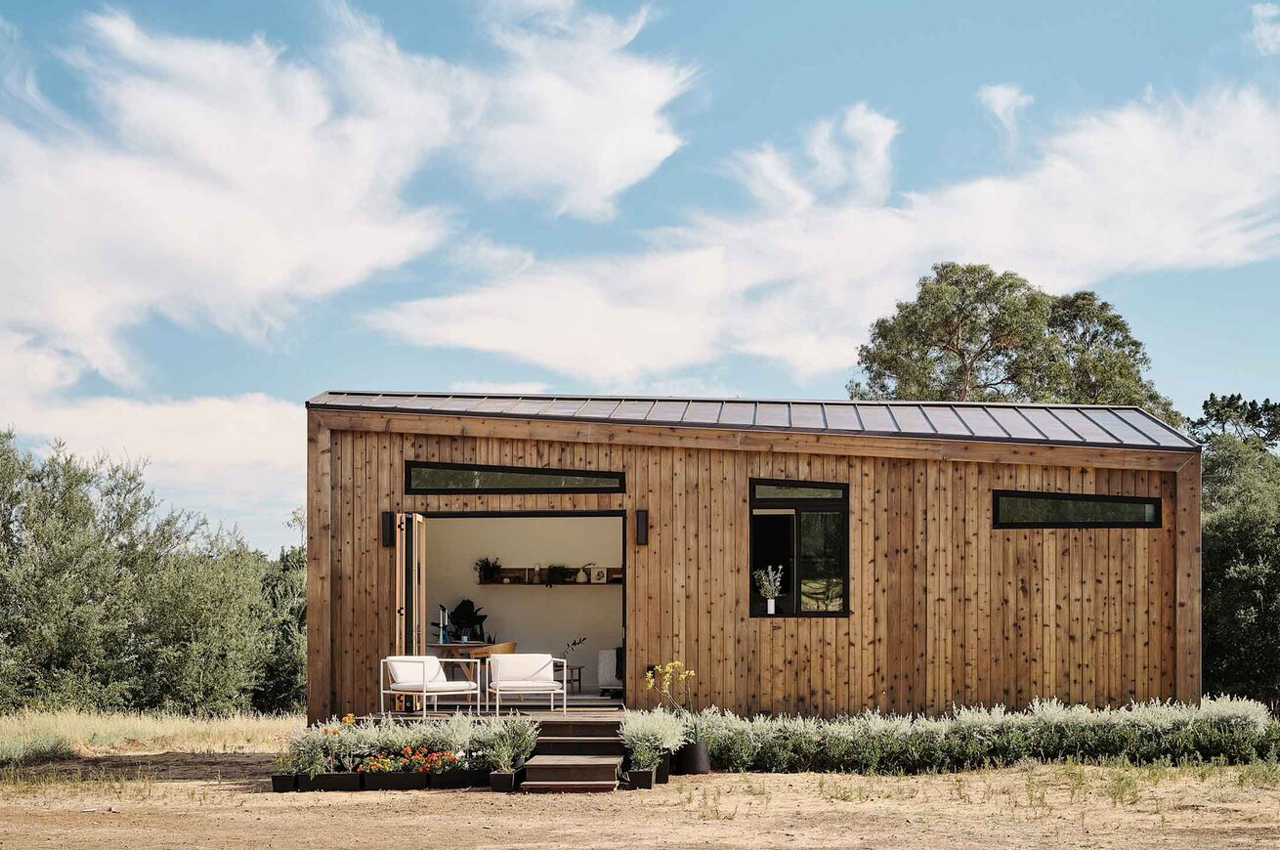
Based in the English seaside village of Westward Ho!, the architecture studio Koto Design captures the mellow vibe of a day spent at the seashore and translates it into a home space. Inspired by Scandinavian simplicity and Japanese minimalism, the result comes through breezy, open floor layouts and organic building materials.
Why is it noteworthy?
The architecture studio is known for its extensive catalog of sustainable, prefabricated tiny homes that can be transported to locations across the globe. In a recent collaboration with the USA-based, backyard home-building company Adobu, the two studios worked together to construct a tiny, prefabricated home that marries Scandinavian design with a Californian twist.
What we like
- Provides a semi-outdoor lifestyle
- Is carbon-neutral, and provides off-grid capabilities
What we dislike
- With its sloped roof, it will be difficult to grow the space vertically
7. The Folding Dream House
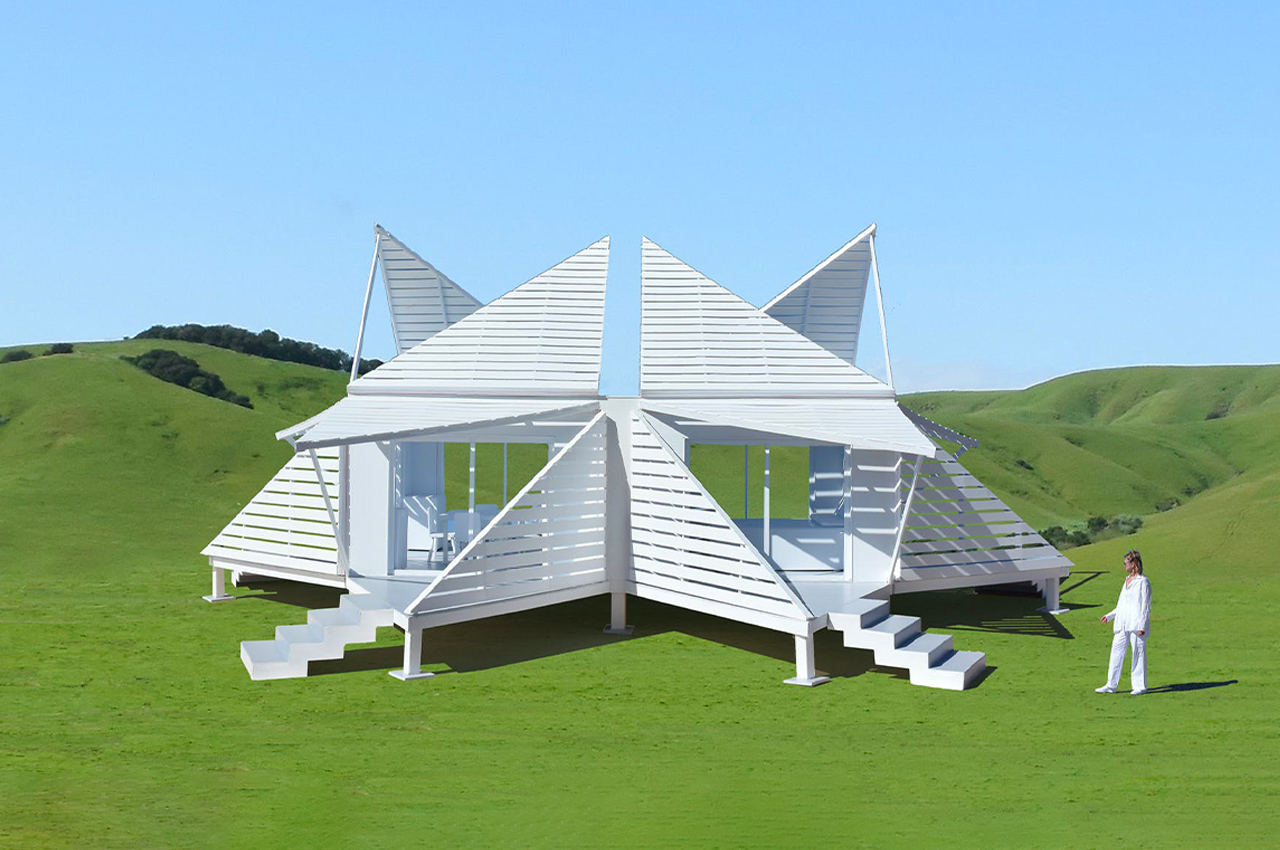
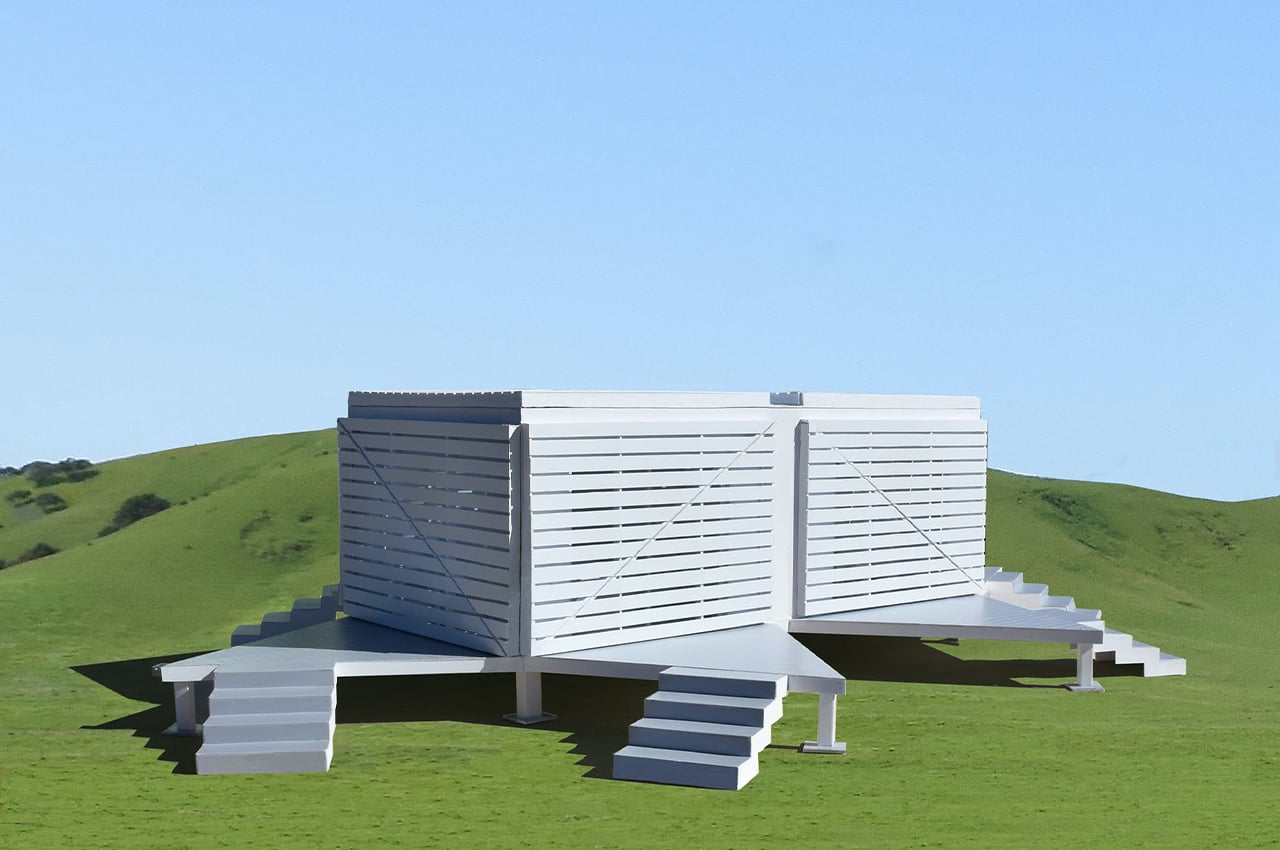
Michael Jantzen, a multidisciplinary artist based in New Mexico, is one artist who seems endlessly inspired by geometry. Merging sustainability, architecture, and technology, Jantzen developed an adaptable modern home called The Folding Dream House that expands from an enclosed, cubic structure into a multi-layered, dream home.
Why is it noteworthy?
From its initial conception, the Folding Dream House was designed as a place to sleep. Amounting to the size of a conventional hotel room, the Folding Dream House consists of two prefabricated, portable modules. Each rectangular module is envisioned mounted atop an elevated, triangular foundation that connects the home’s expandable support beams to its frame. On each facade of the Folding Dream House, Jantzen envisioned triangular overhangs and partitions as foldable panels that expand from the home’s frame.
What we like
- The panels can be folded open or closed in many different ways around the modules in order to accommodate various functional and/or aesthetic requirements
What we dislike
- It’s still in the conceptual phase, which means that there could be fundamental changes as the material restrictions come in the production phase
8. Common Knowledge x Tigín Tiny Homes
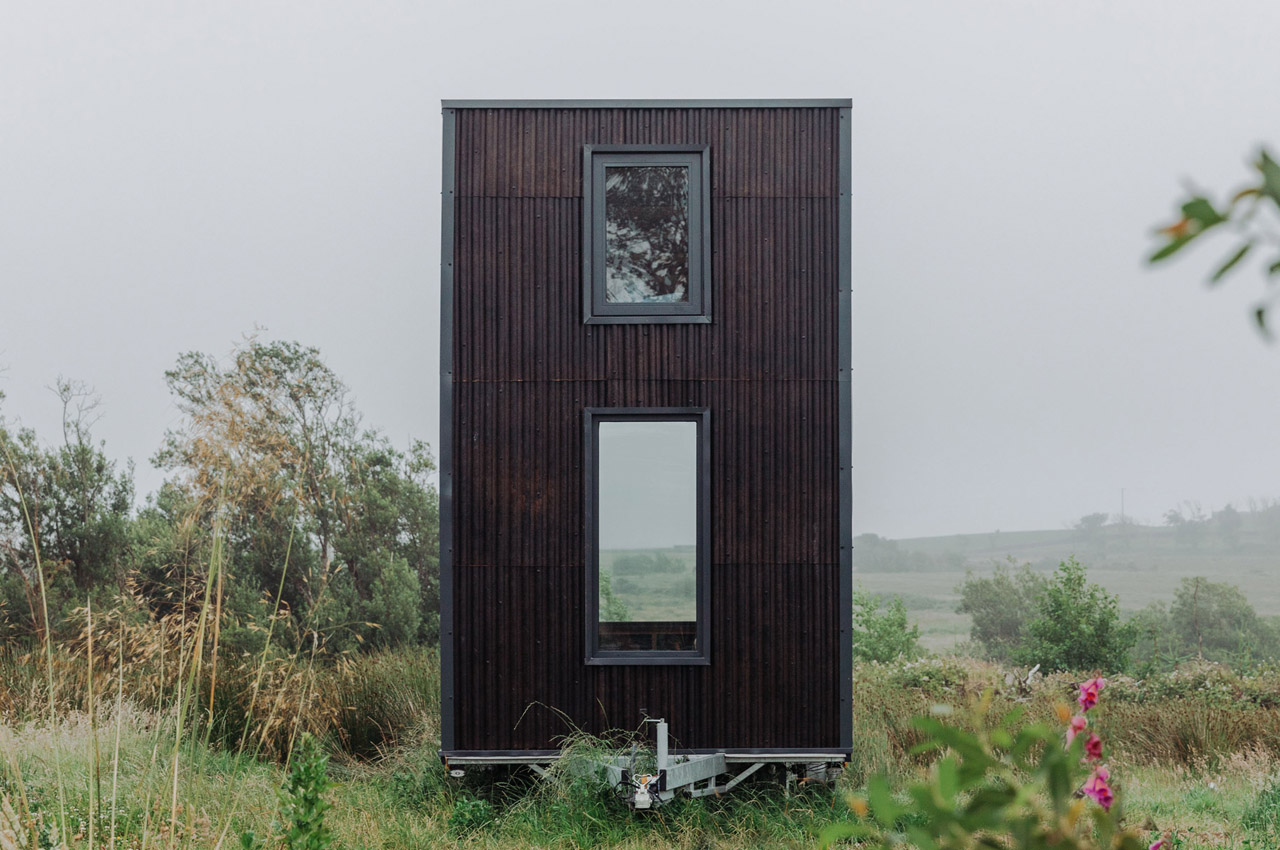
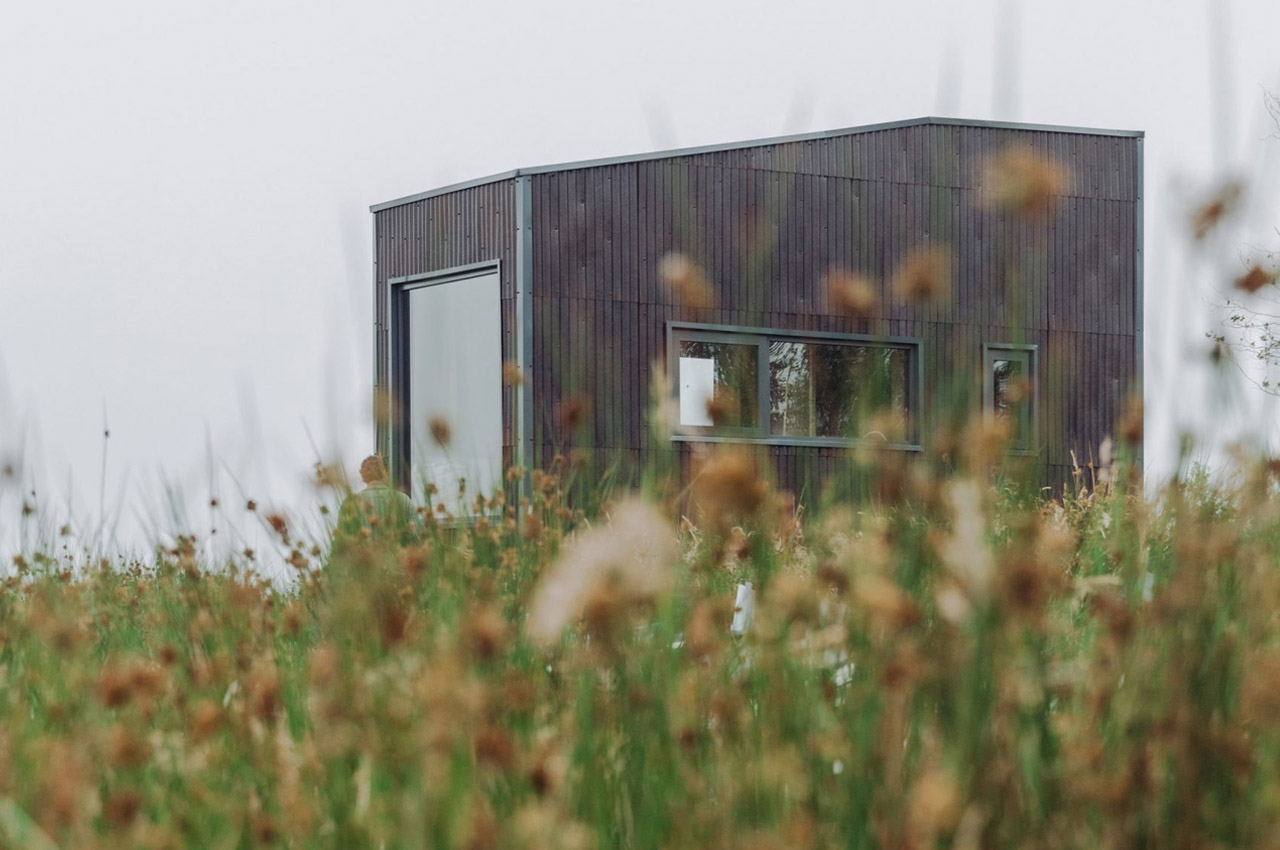
Irish social enterprise Common Knowledge has collaborated with Tigín Tiny Homes to create low-carbon micro homes that are meant to provide sustainable and economical housing solutions to people struggling to buy their own homes. Currently, property prices in Ireland are increasing by 11 percent every year, and this project hopes to tackle this ongoing housing crisis, and “empower people to take action on the housing and climate crises.”
Why is it noteworthy?
Besides building these sustainable and affordable dwellings, they are also providing training schemes to teach residents how to build and repair their own homes! The founder of Common Knowledge, Fionn Kidney said, “Ultimately, the plan of our Tigín project is not just to build these Tiny Homes, but to teach more than two hundred people with the skills to build these or any other projects themselves, whilst creating and releasing a free-to-use blueprint at the end of this year.”
What we like
- The twenty-square-foot homes feature a facade of corrugated hemp panels, cork insulation, and natural rubber flooring
- The homes are spread out across two levels, giving them a spacious feel, although they are compactly sized
What we dislike
- Not the most aesthetically pleasing homes
9. Buster


Buster is located in Matamata, just a couple of hours away from Auckland, New Zealand. You will be able to hear the sound of spring river water flowing around you as you’re surrounded by trees, stones, valleys, and basically the joys of nature. It’s located below the Kaimai Range “amongst ancient native bush and farmland”. It is a tiny home perfect for one person or a couple who wants to temporarily or even permanently live in such an area and to have something that is built sustainably and with the environment and your comfort in mind.
Why is it noteworthy?
Instead of being made from timber, it uses black corrugate as it will last longer and can survive all the different kinds of weather that the area experiences. They also used plywood to bring “a sense of warmth” to the house and is in fact what is also used in the traditional kiwi trampers huts, giving you even more of a local feel but with modern conveniences. It’s a pretty good combination, having a more natural lodging but using sustainable technology and devices to give you comfort and function.
What we like
- Buster is powered by GridFree solar panels
- The house is oriented to the north so that it will be able to maximize the light during the summer and even during the winter
What we dislike
- The solar energy is only enough to power a small fridge, and lights, and to charge your smartphones
10. Wattle Bank Home
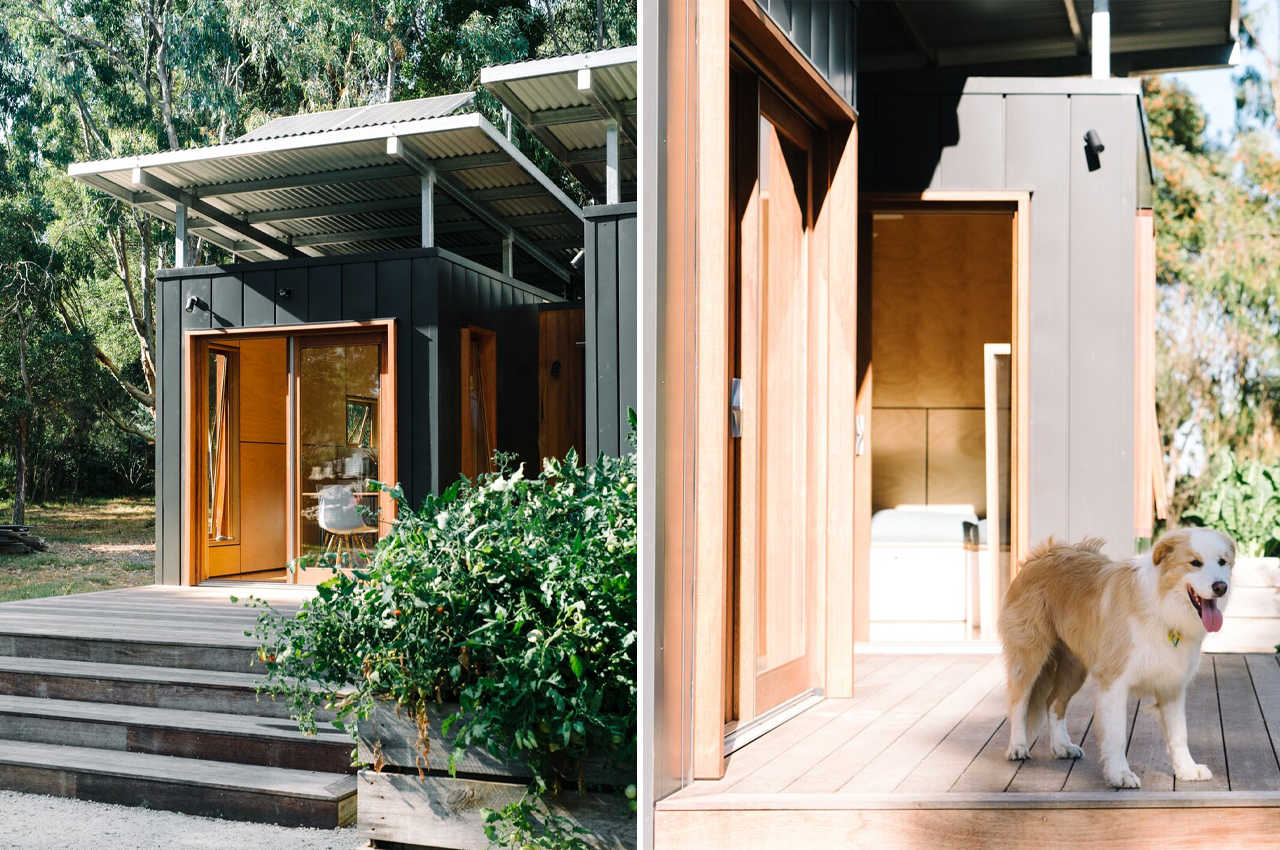
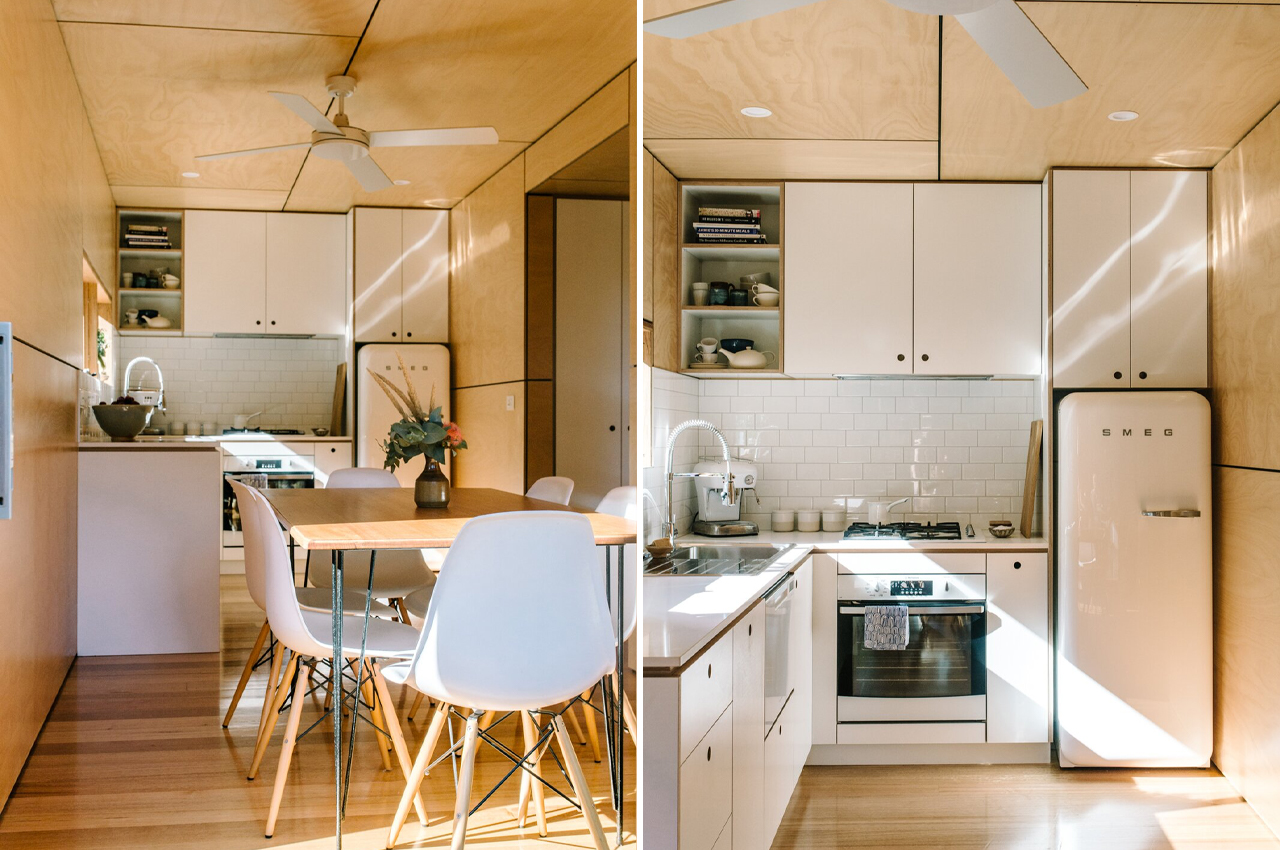
Situated on a plot of land on Amy’s parents’ farm, the couple’s Wattle Bank home was designed and built by the modular home building company, Modhouse, founded by Amy’s parents Mark and Melissa Plank. Each 20-foot shipping container that comprises the tiny home connects to one another via integrated passageways. These hallways also help make the most of the available living space by hosting utility rooms, like the laundry and entryways. Throughout the home, floor-to-ceiling entryways and windows give the feeling of indoor-outdoor living, adding some extra space to the interior as well.
Why is it noteworthy?
Hoping to make their dream of a downsized, sustainable lifestyle a new reality, Plank and Vaughan found the freedom they hoped for in shipping container architecture. Merging three shipping containers together to form a 530-square-foot tiny home, Plank’s and Vaughan’s Wattle Bank home fits the bill.
What we like
- Provides a feeling of indoor-outdoor living
- Built using eco-friendly materials
What we dislike
- Not much to distinguish it from other shipping container-based architecture out there
The post Top 10 sustainable architecture designed to be an environmentalist’s dream home first appeared on Yanko Design.
via https://ift.tt/aqKI1mE
Post a Comment
Note: Only a member of this blog may post a comment.